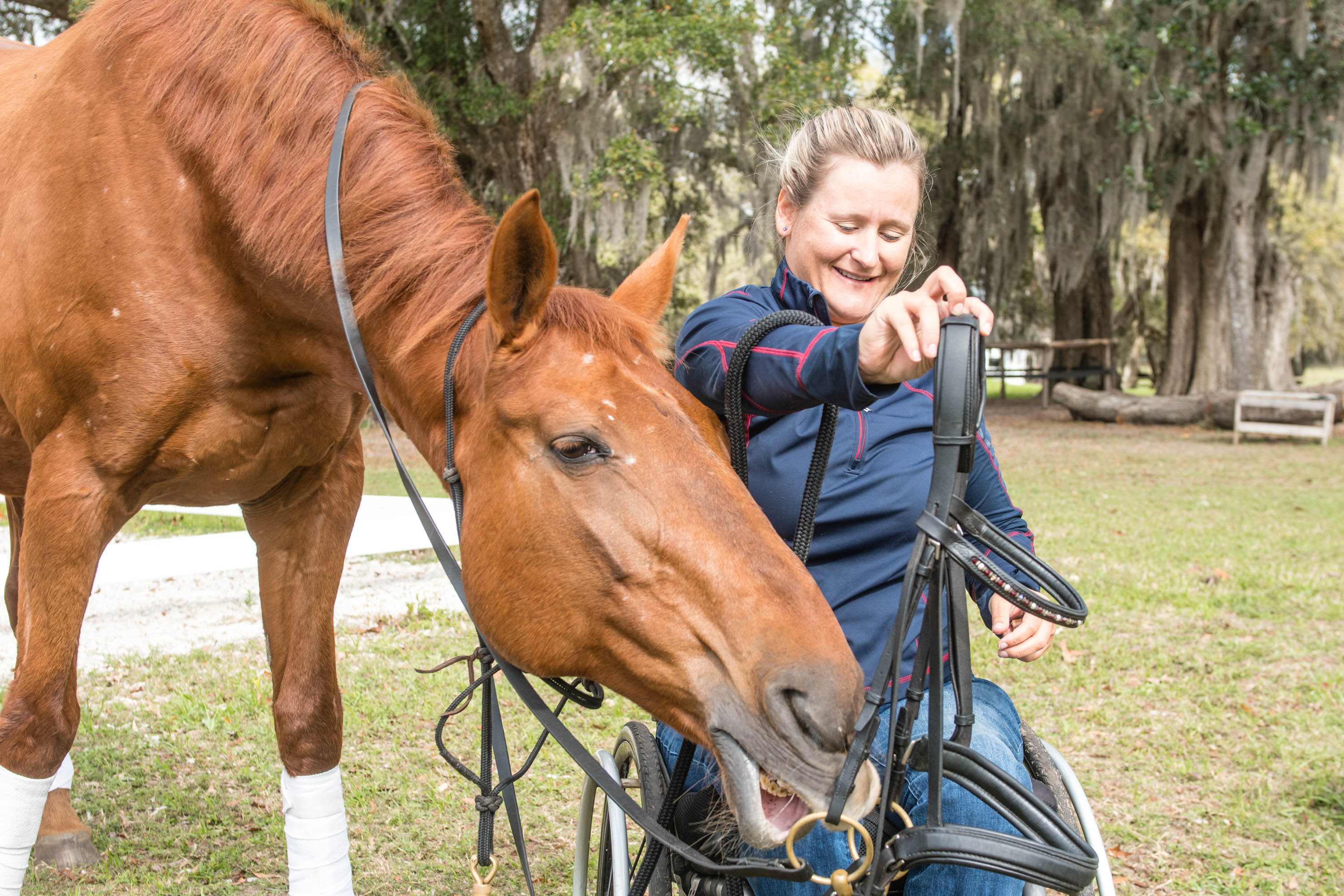All of my horses reach for the bridle when being tacked up. The way a horse accepts his bridle and bit can reveal much about his feelings toward his work. The mouth is the most sensitive place on a horse’s body, which is what allows us to communicate with him on the most subtle and refined level. When bridling my horses, I always watch how willing they are to accept the bridle. If they hesitate, I ask myself why: Was the horse offended in the last training session? Is there another source of physical discomfort? Have things been moving too fast so the horse feels pressured? Ideally, I want my horses to reach eagerly toward the bit and bridle and accept them willingly.

As with all training, I believe keeping sessions playful can make bridling more interesting for horses. While I want the horse to have positive associations with being bridled, I likewise do not want the horse to expect a food treat every time he is bridled. I achieve these goals with what I call “The Bridle Game:” a step-by-step process that is actually about much more than just getting the bridle on the horse.
How to Play the Bridle Game
• Show your horse a cookie or other bite-size treat and then show him the bit. Repeat this, getting the horse’s attention and generating his curiosity. You may bridle the horse, allowing him to take the bit and the cookie from your hand at the same time.
•The next day, repeat—show the cookie and show the bit. Now, if you show the horse the cookie and he reaches toward the bit or touches the bit or bridle with his nose or investigates in any way, give her the cookie. Then, retreat from the game and don’t even bridle the horse. (It’s best to play this at a time when you are not actually planning to bridle. The concept here is that it’s not about getting the bridle or bit on the horse—it’s about engaging him.)
•Again, at another time or the next day, show the cookie and show the bit. When the horse reaches for or grabs for the bit, take the bridle away and give the cookie.
•You can start to put the bridle on and take it off, wait a couple minutes and repeat.
•The game gets fun when you can start walking away while holding the bridle and the horse follows you to get the bit!
This is something to do in the morning or when you’re not about to ride. It’s not about getting the bridle on or the bit in the horse’s mouth—it’s about causing the horse to want to go for it. Eventually, when bridling the horse, I’ll only have the cookie once in a while. My goal is for the horse to see me with the bridle, reach his head down and around me for the bit, so I can carefully bring his ears through. Sometimes he gets a cookie and sometimes he doesn’t. But I know if I’ve had a difficult training session, it will sometimes show up the next day when my horse doesn’t reach for the bridle. It’s as if he’s telling me: ‘I don’t know if I want to put this bit in my mouth.’ This is a part of the journey. This is me getting feedback. To me, taking the bridle is not necessarily a “the horse’s job” that he has to do. I care about feedback that tells me where the horse is mentally and emotionally on a given day.
We come out with a plan—what am I going to do with my horse today? But we have to be willing to deviate from our plan to do what is best based one where the horse is physically, mentally and emotionally. The horse’s engagement and willingness during grooming, saddling and bridling can give us clues as to where the horse is that day.
Canadian Lauren Barwick is a four-star Parelli Professional as well as a Paralympic gold and silver medalist in dressage. In addition to attending four Paralympic Games and World Equestrian Games in dressage, Barwick has successfully competed on the world stage in Para-Reining and has earned a USDF bronze medal. In light of her international achievements, she has been awarded an FEI Bronze Badge of Honor and inducted into the Canadian Disability Hall of Fame. Barwick trains and teaches from her facility in Reddick, Florida, where she lives with her fiancée and daughter. Barwick also travels to offer her trademark “Bridging the Gap” clinics, which emphasize a merging of biomechanics, natural horsemanship and dressage foundations.











